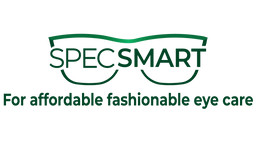By Dr. Deborah Oparaji (OD)
Children are not exactly born with perfect vision. Several structures in the eye are still developing after birth. Between the ages of 6 to 36 months, the foundation of visual development is established.
This period is crucial. During this time, some eye conditions can be easily detected and treated. Unfortunately, most of these issues go unnoticed because children cannot fully express what they see or feel.
That’s why SpecSMART Eye Clinic Ikoyi encourages parents to monitor their child’s visual behavior closely and schedule regular eye checkups with an experienced optometrist.
What Is Vision Screening?
Vision screening is a quick test often done at school or outreach programs. It checks whether a child can see well at near or far distances. However, it doesn't provide a diagnosis.
While vision screenings can identify obvious problems, they can miss subtle or internal issues. That’s why a comprehensive eye examination at a professional eye clinic like SpecSMART Eye Clinic Ikoyi is necessary.
What Is a Comprehensive Eye Examination?
A comprehensive eye exam is an in-depth evaluation performed using appropriate tools in a clinical setting. It helps the optometrist make an accurate diagnosis and begin early treatment or management.
At SpecSMART Eye Clinic Ikoyi, we recommend that every child undergoes routine comprehensive eye exams, not just vision screenings.
Signs Your Child Might Need an Eye Exam
Some children show signs that could indicate vision issues. As a parent, it's important to look out for the following:
-
Difficulty following objects with their eyes (especially after 3 months of age)
-
Crossed or misaligned eyes (after 4 months)
-
Frequent eye itching or rubbing
-
Unusual eye color (yellow, red, or blue tint)
-
Excessive tearing
-
Sensitivity to light
-
Involuntary eye movements
-
Cloudy or whitish pupils
-
Tilting the head to see
-
Short attention span or difficulty reading
-
Refusal to complete school tasks
Some serious conditions like Amblyopia (lazy eye) may show no obvious signs but can cause permanent vision loss if left untreated. Early detection through comprehensive exams is the only way to catch and manage it on time.
When Should Children Have Their Eyes Examined?
Here is a basic timeline for children's eye exams:
-
6–12 months old: First comprehensive eye exam
-
1–3 years old: Second checkup
-
3–5 years old: Third checkup
-
5 years and above: Annually (once per year)
At SpecSMART Eye Clinic Ikoyi , we support families in creating healthy vision habits by encouraging annual eye checks.
What Parents Should Know Before the First Eye Exam
Before your child’s first eye test, be prepared to provide:
-
Medical and eye health history (from pregnancy to present age)
-
Family history of eye diseases or medical conditions
-
Any glasses, contact lenses, or medications the child has used
This information helps your optometrist assess your child more accurately and develop the right management plan.
Vision Screening vs. Comprehensive Eye Exam: What’s the Difference?
Many schools offer vision screenings through health outreach programs. While helpful, these screenings are limited and can't replace a full eye exam.
A vision screening might involve reading an eye chart or receiving basic medication. A comprehensive eye exam, however, includes:
-
Internal and external eye health check
-
Vision clarity measurement
-
Eye muscle movement testing
-
Early diagnosis of hidden conditions
Your child needs both — but especially a comprehensive eye exam at a reputable clinic like SpecSMART Eye Clinic Ikoyi.
Conclusion: Start Eye Health Early
Regular comprehensive eye exams are one of the best investments you can make for your child’s health. These exams help in:
-
Preventing undetected conditions
-
Supporting academic performance
-
Boosting confidence
-
Promoting overall eye wellness
Make eye health a family priority. At SpecSMART Eye Clinic in Ikoyi, our experienced optometrists are committed to safeguarding your child’s vision from infancy into adulthood.
FAQ
What age should my child get their first eye exam?
Between 6 and 12 months old. Followed by checkups at 3 years, 5 years, and then yearly.
Are vision screenings enough for my child?
No. Vision screenings help, but they are not diagnostic. A comprehensive exam is necessary for accurate detection and treatment.
Can poor vision affect my child’s performance in school?
Yes. Many academic struggles stem from undetected vision problems.
📍Contact SpecSMART Eye Clinic Ikoyi
SpecSMART Eye Clinic – Ikoyi
Ikoyi Plaza, Keffi Street, Ikoyi.
📞0701 820 7496


